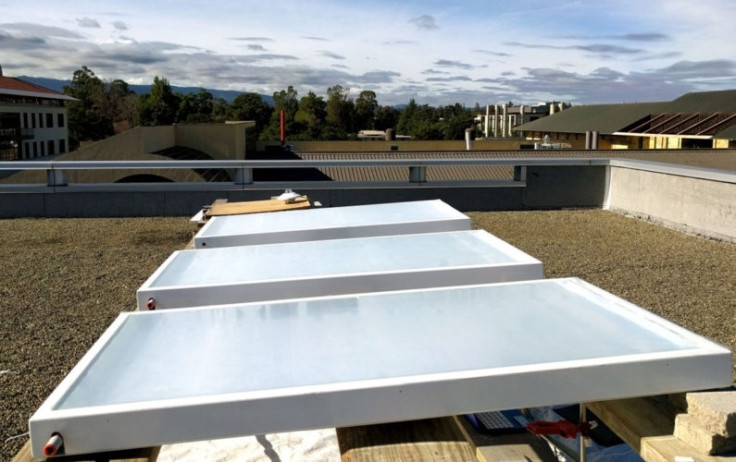Groundbreaking cooling system that works without electricity could drastically reduce energy use
Traditional cooling systems consume around 15% of all electricity and are responsible for 10% of greenhouse gas emissions.

A team from Stanford University has developed a new cooling system that works without electricity by harnessing one of nature's fundamental processes. The technology, if commercialised, could be integrated with traditional air conditioning and refrigeration systems, significantly reducing energy use and cutting down on costs.
These traditional cooling systems consume roughly 15% of all electricity worldwide and are responsible for around 10% of greenhouse gas emissions. Furthermore, electricity use for cooling is estimated to grow around tenfold by the year 2050, highlighting the need to reduce energy consumption in this area.
The system the researchers have developed is based around a mirror-like optical panels which cool water in pipes to a temperature below that of the surrounding air, without using electricity. It takes advantage of a natural process called radiative sky cooling – the process by which all things, organic and inorganic, lose heat by emitting thermal energy into the sky and our surroundings.
"If you have something that is very cold – like space – and you can dissipate heat into it, then you can do cooling without any electricity or work. The heat just flows," said Shanhui Fan, a professor of electrical engineering at Stanford who is senior author of the paper. "For this reason, the amount of heat flow off the Earth that goes to the universe is enormous."
Even though our bodies release heat, on a hot day, the sunlight warms us faster than our own thermal energy can escape due to radiative sky cooling. So, to stop sunlight and heat penetrating the panel and warming the water underneath, the researchers covered it in a multi-layered optical film that reflects about 97% of sunlight while simultaneously allowing heat - or thermal energy – to escape from the other side into the sky. With heat from sunlight unable to pass through, the optical film can cool whatever is underneath it to below the temperature of the air, even on a hot day.
"With this technology, we're no longer limited by what the air temperature is, we're limited by something much colder: the sky and space," said Eli Goldstein, co-lead author of the paper which details the research, published in the journal Nature Energy.
For the study, the team demonstrated the process on a small scale. They covered pipes of running water on a roof with panels made from the specialised optical film and were able to reduce the temperature of the water up to 5 degrees Celsius over a three-day period.
They then inputted the data they had collected into a computer model to simulate a situation where the specialised panels covered the roof of a two-storey office-building in Las Vegas, integrating with its normal cooling system. Hot, dry places such as this are where the panels would work best.
In fact, their results showed that, in the summer months, their system was responsible for a 21% reduction in the electricity use of the building, while over the entire simulated period, electricity savings fluctuated between 18 and 50%.
Aaswath Raman, who is co-lead author of the paper, said this research "provides for the first time a high-fidelity technology demonstration of how you can use radiative sky cooling to passively cool a fluid and, in doing so, connect it with cooling systems to save electricity".
Together, Raman, Fan and Goldstein have founded a company, SkyCool Systems, which will attempt to hone the technology and commercialize it.
"It's very intriguing to think about the universe as such an immense resource for cooling and all the many interesting, creative ideas that one could come up with to take advantage of this," Fan said.
© Copyright IBTimes 2025. All rights reserved.





















